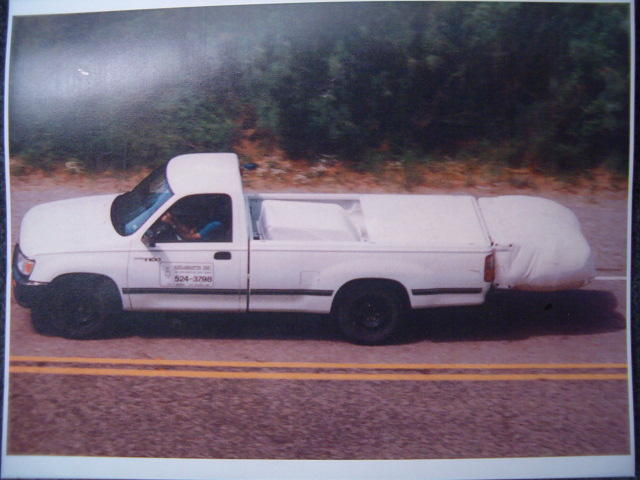
Quote:
Originally Posted by JSH

Curious where you are getting this 48" number from and what the point of reference is. There a plenty of vehicle out there with massive extensions past the rear axles.
|
As a reaction to the Arab Oil Embargos of 1973 and '79, the USDOT added a 'work-around' to their own Class-8 length restrictions for semi-trailers, as long as it was for energy efficiency.
NASA and the major tractor manufacturers knew from their own research that, 'elongating' the trailer body with a boat tail would absolutely improve mpg.
They allowed four-feet for 'rigid' tails, and five-feet for inflatable tails ( Fachsenfeld, circa 1935, at the FKFS, Stuttgart, Germany ).
BMW and the Wagonner's Trucking Company have used rigid four-foot, FRP tails on their 18-wheelers.
Continuum Dynamics held to four-feet with their $425,000, DARPA-funded semi-trailer box-cavity, measured by NASA, at Ames, Palo Alto, CA.
You'll notice that the 'rigid panel' 'Trailer Tail', as used primarily with Messila Valley Trucking, held to a four-foot tail, although they've continuously lobbied in the US and EU for 'longer' tails, known to provide larger mpg gains. The 'Trailer Tail' is kind of a 'folding' version of Continuum's box-cavity.
Bruce Ruefer, an 'inventor' of Lubbock, Texas, was the last 'champion' of the inflated tail that I know of. Texas Tech University tried to help him with their Aero Lab in the mid-1990s.
I'm not in any 'official loop' as far as data goes, so I have no knowledge that the federal govt. has ever changed their length allowances.
I'm in the 'go ahead and boat-tail camp,' and beg for forgiveness if ever 'cited' for a violation. ( full executive immunity for ecomodding )
I added a four-foot inflated boat tail to AeroStealth's Toyota T-100 in 1995, and along with a half-tonneau, and rooftop storage container on the floor of the truck bed, experienced over 30-mpg for the first time in the T-100.